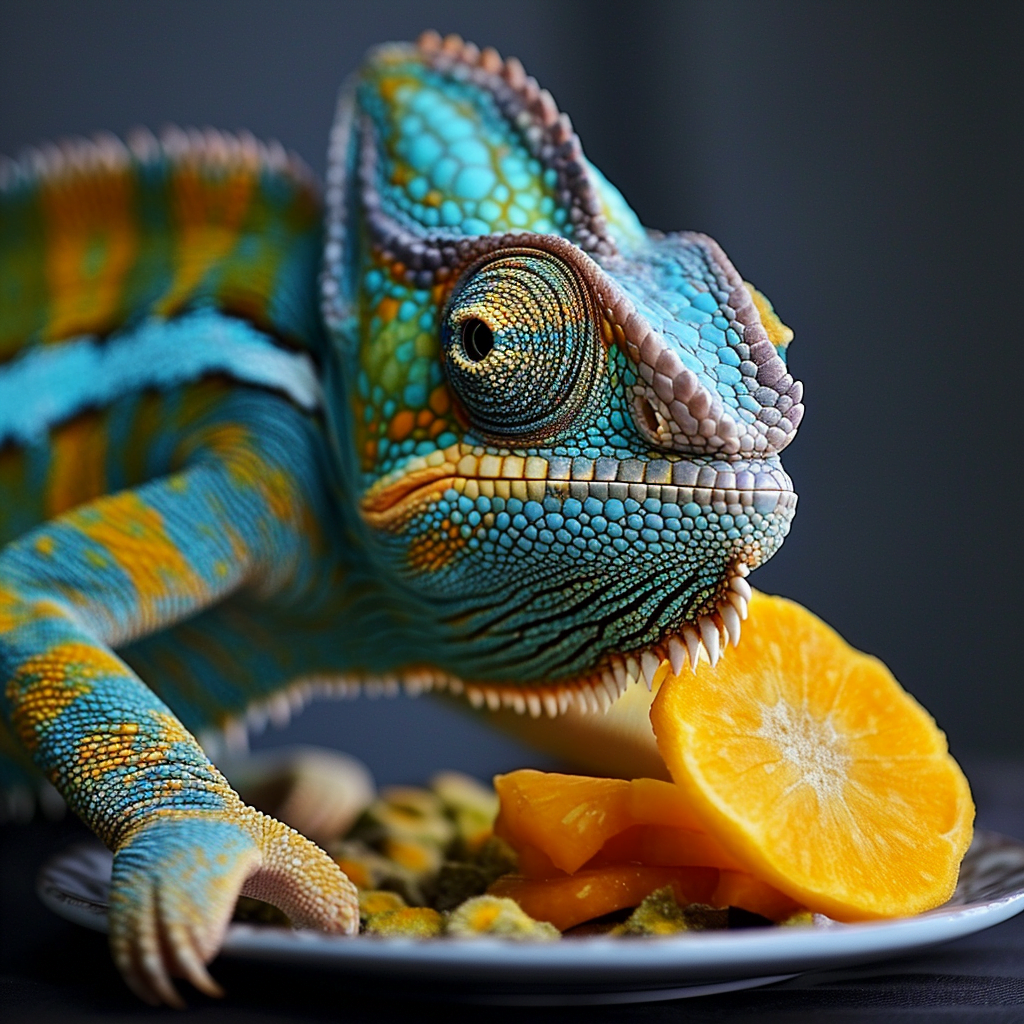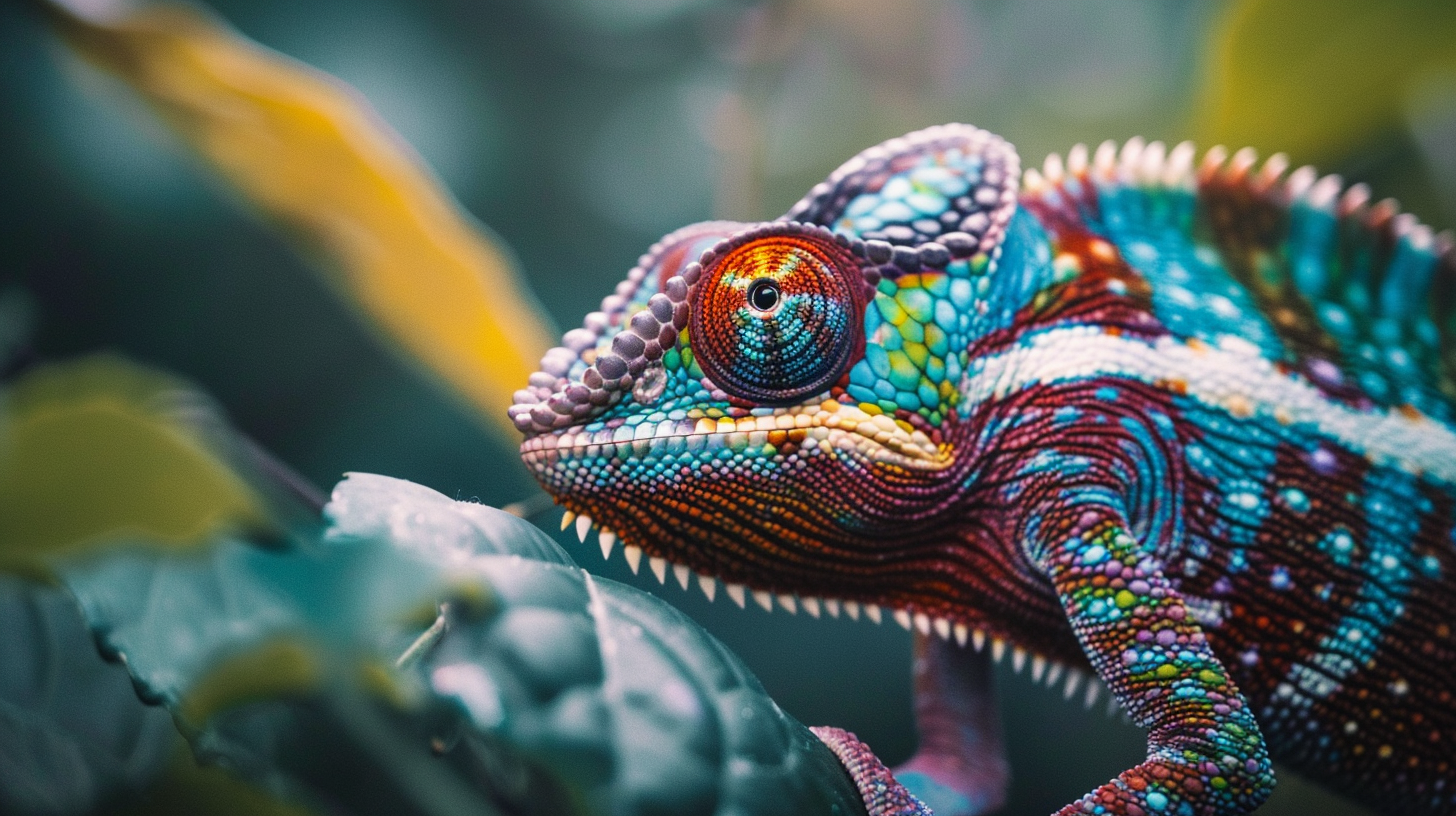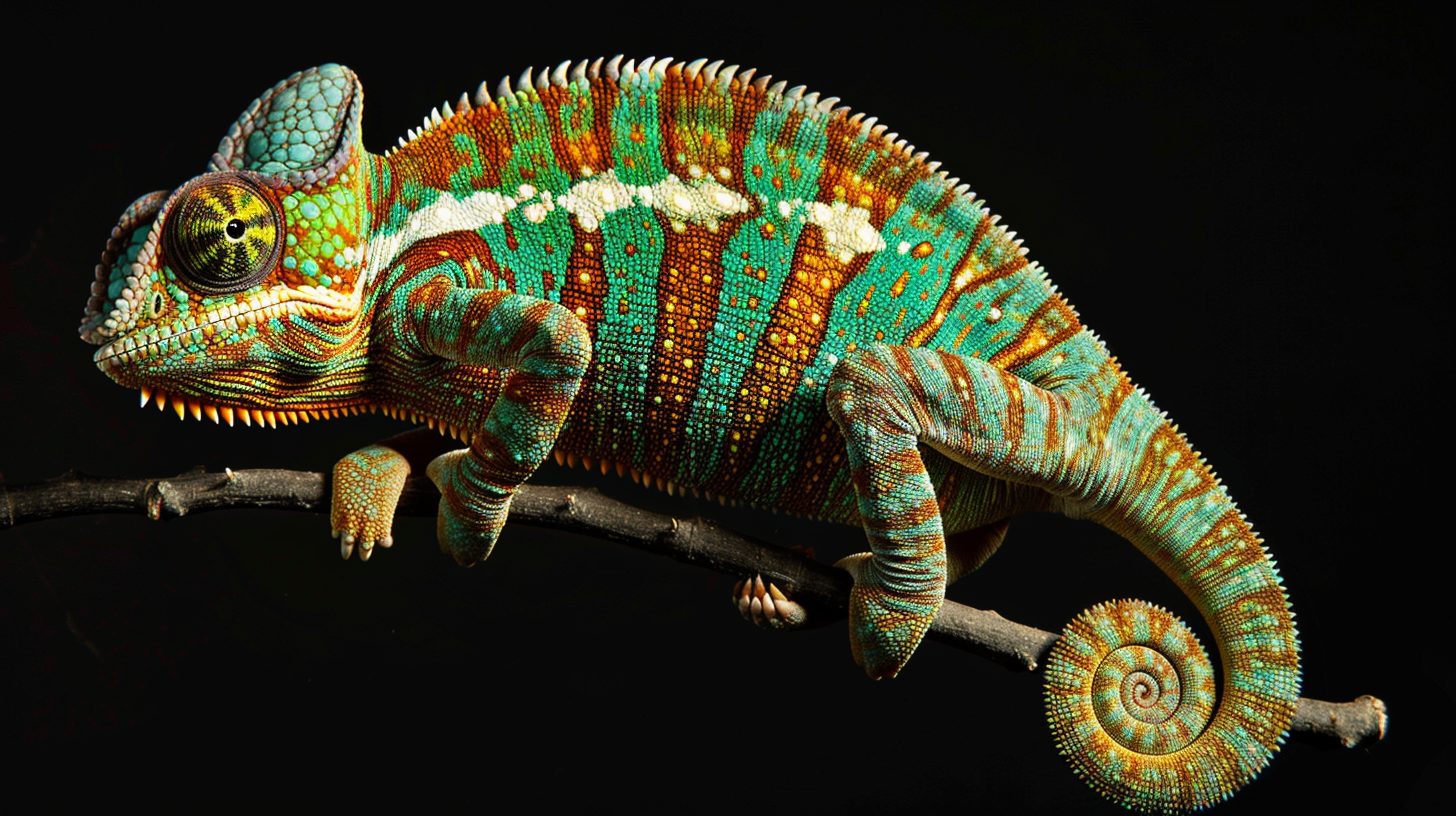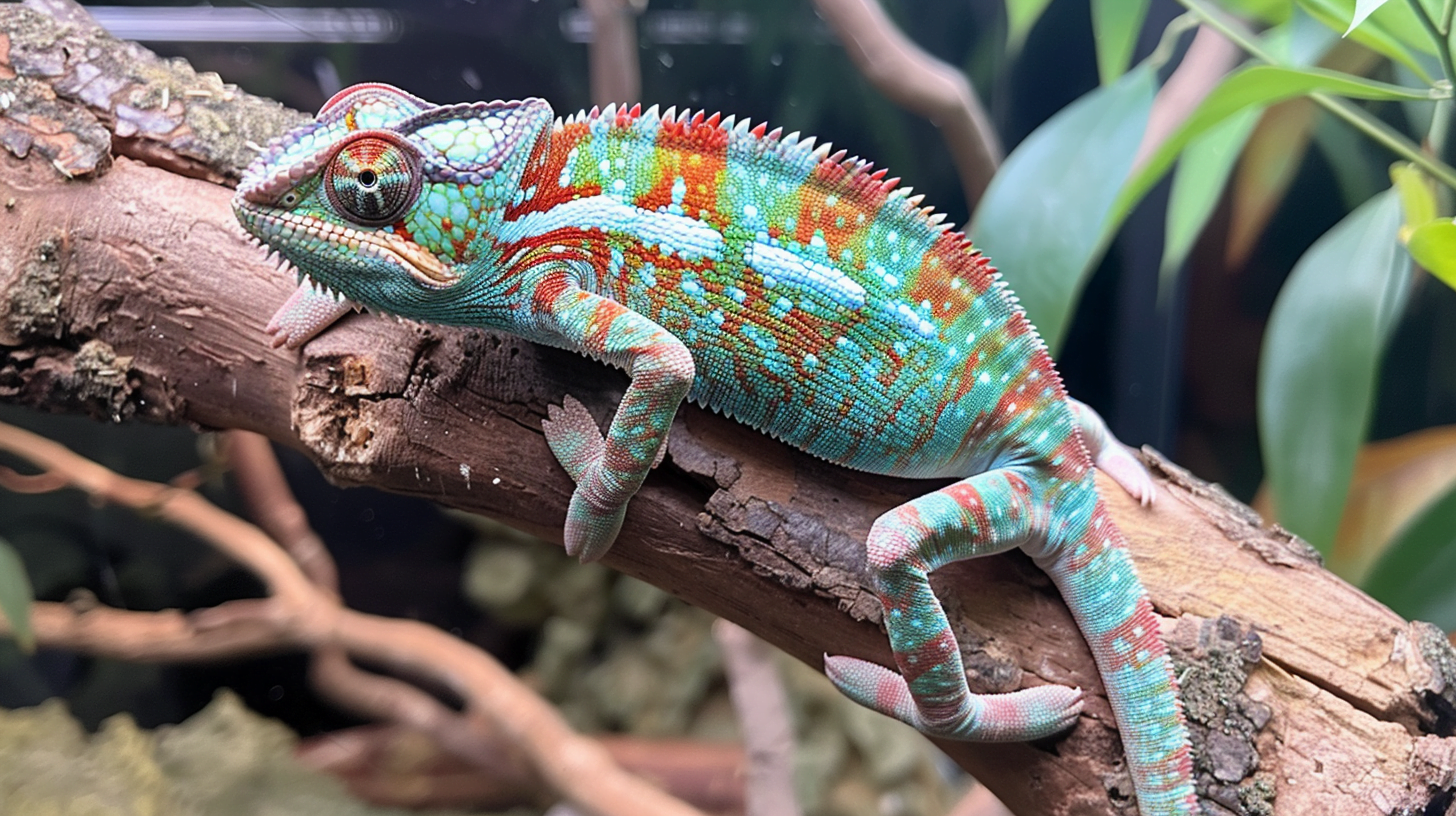Chameleons, the intriguing reptiles known for their remarkable ability to change color, have long fascinated scientists and nature enthusiasts alike. However, one enigmatic question persists: what can chameleons eat? By analyzing their feeding behaviors and dietary patterns, this article aims to shed light on the intricate and diverse diet of chameleons. From insects to small vertebrates, the chameleon’s menu is far more varied than one might imagine, providing valuable insights into their evolutionary adaptations and ecological niche. Join me as we embark on a captivating exploration into the world of chameleon nutrition.
Overview of Chameleons’ Diet
Chameleons are fascinating reptiles known for their ability to change colors and adapt to their surroundings. In order to thrive, chameleons require a well-balanced and varied diet. This article aims to provide a comprehensive overview of the diet of chameleons, including the types of chameleons, their general diet, favorite insects, the importance of vegetation, water consumption, gut-loading and supplementation, special dietary considerations, predation and hunting techniques, diet variations with chameleon species, and factors affecting chameleon diet.
Types of Chameleons
There are numerous species of chameleons around the world, each with its own unique characteristics and dietary preferences. Some of the most common types of chameleons include the Veiled Chameleon, Panther Chameleon, Jackson’s Chameleon, and Oustalet’s Chameleon. While their physical appearances may vary, their dietary requirements are fairly similar. Chameleons are primarily insectivores, which means their diet consists mainly of insects and invertebrates.
General Diet
Chameleons have an incredibly diverse diet that consists primarily of insects and invertebrates. Their digestive systems are specifically adapted to process these types of food. In the wild, chameleons hunt and consume a wide range of prey, including grasshoppers, crickets, flies, beetles, and spiders. They rely on their long, sticky tongues to capture their prey with lightning-fast precision. However, the diet of chameleons extends beyond just insects.
| Chameleon Species | Typical Prey | Favorite Insects | Vegetation Consumption | Special Considerations |
|---|---|---|---|---|
| Veiled Chameleon | Crickets, beetles | Crickets | Hibiscus, ficus | Prefers a varied diet with more vegetation; requires frequent calcium supplementation |
| Panther Chameleon | Crickets, flies | Mealworms | Limited; ficus | High need for live prey; sensitive to dietary changes |
| Jackson’s Chameleon | Grasshoppers, flies | Locusts | Pothos, dracaena | Needs lower protein intake as adults; more reliant on hydration |
| Oustalet’s Chameleon | Beetles, spiders | Waxworms | Minimal; prefers prey | Larger prey items due to size; more aggressive feeding needed |
| Brookesia Micra (Nano) | Ants, termites | Small ants | Not applicable | Extremely specific diet due to miniature size; special habitat considerations |
Insects and Invertebrates
Favorite Insects
While chameleons consume various insects, they do have certain favorites that they prefer above others. Among their most favored insects are crickets and mealworms. These insects offer a rich source of protein and other essential nutrients, making them a crucial part of a chameleon’s diet. In addition to crickets and mealworms, chameleons also enjoy feeding on waxworms, fruit flies, and locusts.
Invertebrates as Food
Apart from insects, chameleons also consume other types of invertebrates. Small spiders, snails, and slugs are also on the menu for these reptiles. Invertebrates serve as an excellent source of calcium, which is essential for the proper growth and development of chameleons. The consumption of invertebrates ensures that chameleons receive a well-rounded diet, providing them with the necessary nutrients for optimal health.

Vegetation in Chameleons’ Diet
Importance of Vegetation
While insects and invertebrates form the majority of a chameleon’s diet, vegetation also plays a crucial role in their overall nutrition. Vegetation provides chameleons with necessary vitamins, minerals, and fiber. It contributes to their overall well-being and supports their digestive system. In the wild, chameleons consume various plant materials to supplement their insect diet.
Types of Vegetation Consumed
Chameleons feed on a variety of vegetation, including leaves, flowers, and fruits. Some common plants in their diet include hibiscus, ficus, pothos, and dracaena. These plants provide chameleons with essential nutrients such as vitamin A and calcium. It is important to note that not all plants are suitable for chameleons, as some may be toxic or harmful to their health. It is crucial for chameleon owners to ensure that the plants in their enclosure are safe and appropriate for their specific species.
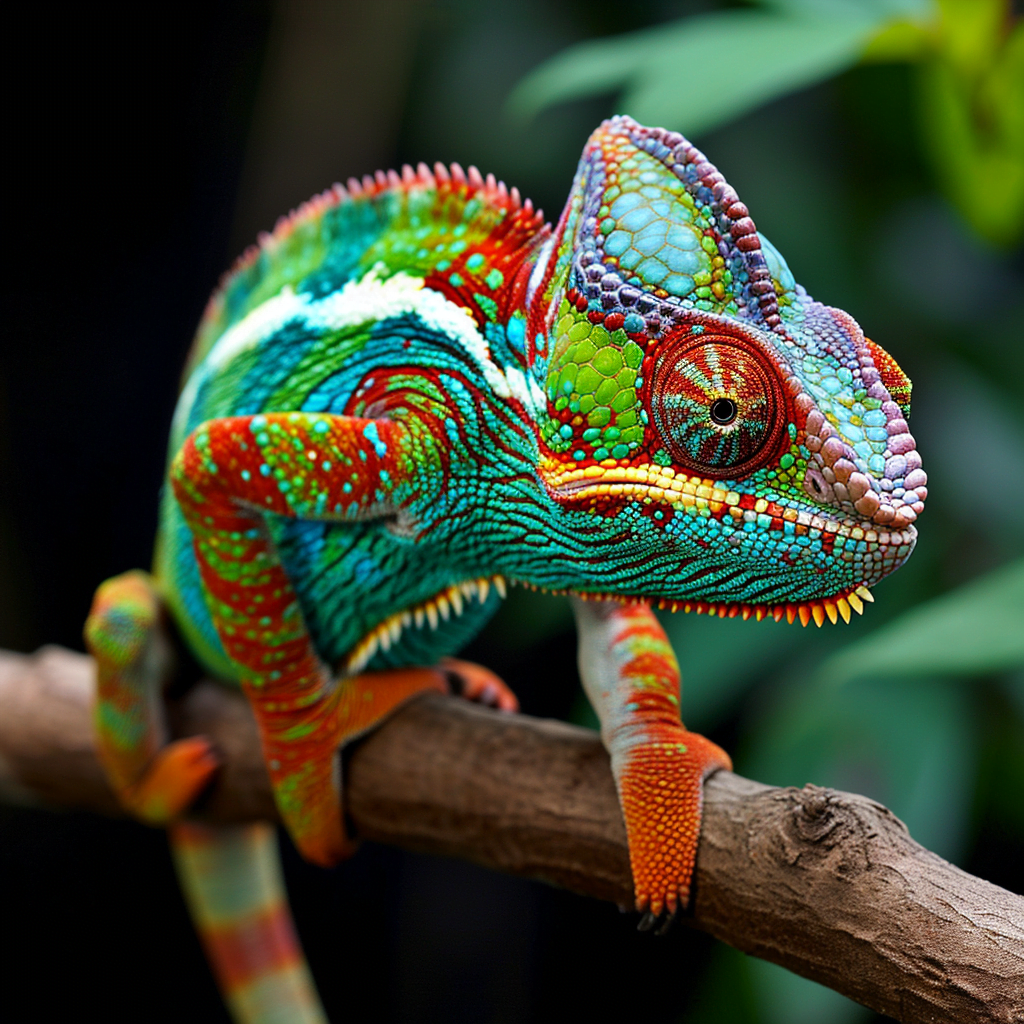
Water Consumption
Water Needs
Proper hydration is essential for the overall health and well-being of chameleons. While they primarily obtain water from the food they consume, chameleons still require access to fresh and clean water. In the wild, chameleons often drink from raindrops or dew on leaves. In captivity, it is important to provide chameleons with a source of clean water to ensure they remain properly hydrated.
Methods of Drinking
Chameleons have unique drinking habits. They do not typically drink from standing water, but instead, lick droplets of water off surfaces or leaves. This behavior, known as lapping, allows them to drink efficiently and makes it easier for them to access water in their natural habitat. Chameleon owners can replicate this behavior by misting the enclosure with water several times a day, allowing the chameleon to lick the droplets for hydration.

Gut-loading and Supplementation
What is Gut-loading?
Gut-loading is an important process in chameleon care, especially when it comes to feeding them insects. Gut-loading involves feeding nutritious foods to the insects before feeding them to the chameleon. By providing high-quality and nutritious food to the insects, the chameleons benefit from the enhanced nutritional value. This is particularly important for captive chameleons, as it ensures they receive a well-balanced diet.
Importance of Supplementation
In addition to gut-loading, chameleons often require supplementation to meet their dietary needs fully. Calcium and vitamin D3 supplementation are especially crucial for chameleon health, as they aid in the proper development and maintenance of strong bones and prevent calcium deficiency-related issues. Vitamin supplements can be dusted onto the insects before feeding them to the chameleon, ensuring that the reptile receives essential vitamins and minerals.
Special Dietary Considerations
Baby Chameleons’ Diet
The dietary requirements of baby chameleons differ slightly from adult chameleons. Baby chameleons are more delicate and require smaller prey items that are easier for them to capture and eat. Small fruit flies, pinhead crickets, and tiny mealworms are suitable options for baby chameleons. It is vital to provide them with a varied diet to ensure proper growth and development during this critical stage.
Diet Implications for Captive Chameleons
Chameleons kept in captivity have different dietary considerations compared to their wild counterparts. Captive chameleons have limited access to a diverse range of prey and vegetation, making it even more crucial for their owners to provide a well-rounded diet. Proper supplementation and gut-loading are especially important in captivity to compensate for any nutritional deficiencies that may arise.

Predation and Hunting Techniques
Hunting Strategies
Chameleons are skilled predators and employ various hunting strategies to capture their prey. They rely on their incredible eyesight to spot potential prey from a distance. Once they have targeted their prey, chameleons utilize their remarkable camouflage abilities to approach undetectably. When in striking range, chameleons rapidly project their long, sticky tongues to capture their prey with precision and speed.
Prey Selection
Chameleons exhibit selective feeding behavior when it comes to choosing their prey. They consider factors such as the size, movement, and color of potential prey. Chameleons are typically more attracted to prey that is smaller in size and exhibits rapid movements. The color of the prey can also influence their choice, as they are more likely to target insects that contrast with their environment.
Diet Variations with Chameleon Species
Diet Variation based on Species
Different species of chameleons have varying dietary preferences and requirements. For instance, the Veiled Chameleon has a wider range of vegetation in its diet compared to other chameleon species. On the other hand, the Panther Chameleon generally consumes a higher proportion of insects. It is important for chameleon owners to research and understand the specific dietary needs of their particular chameleon species to provide optimal care.
Specialized Diets
Certain chameleon species have specialized diets that differ significantly from the general chameleon diet. For example, the Brookesia Micra, also known as the nano-chameleon, exclusively feeds on small ants and termites due to its small size and unique habitat. Other specialized diets may include specific types of fruit or nectar. It is crucial to accurately identify the species of chameleon and understand their specific dietary requirements to ensure their optimal health.

Factors Affecting Chameleon Diet
Environmental Factors
The environment plays a significant role in shaping the diet of chameleons. Factors such as climate, habitat availability, and seasonality can influence the availability of prey and vegetation. Chameleons in different regions may have access to different types of insects and plants, leading to variations in their diet. It is essential to consider these environmental factors when caring for captive chameleons to provide a diet that closely resembles their natural habitat.
Size and Age
The size and age of chameleons can also influence their dietary needs and preferences. Baby chameleons require smaller prey items due to their limited size and capacity to capture larger prey. As chameleons grow and mature, their dietary preferences may change, with some species increasing their insect intake as they become adults. It is important to provide an age-appropriate and size-appropriate diet to ensure the chameleon’s nutritional needs are adequately met.
Conclusion
In conclusion, chameleons have a diverse and fascinating diet that primarily consists of insects and invertebrates. They also require a variety of vegetation for essential nutrients and proper digestion. Adequate hydration through water consumption is crucial, along with gut-loading and supplementation to ensure a balanced diet. Special considerations must be given to baby chameleons and captive chameleons, and variations in diet can be observed between species. Environmental factors and age also play a role in shaping the diet of chameleons. By understanding and providing for their dietary needs, chameleon owners can ensure healthy and thriving reptiles.
